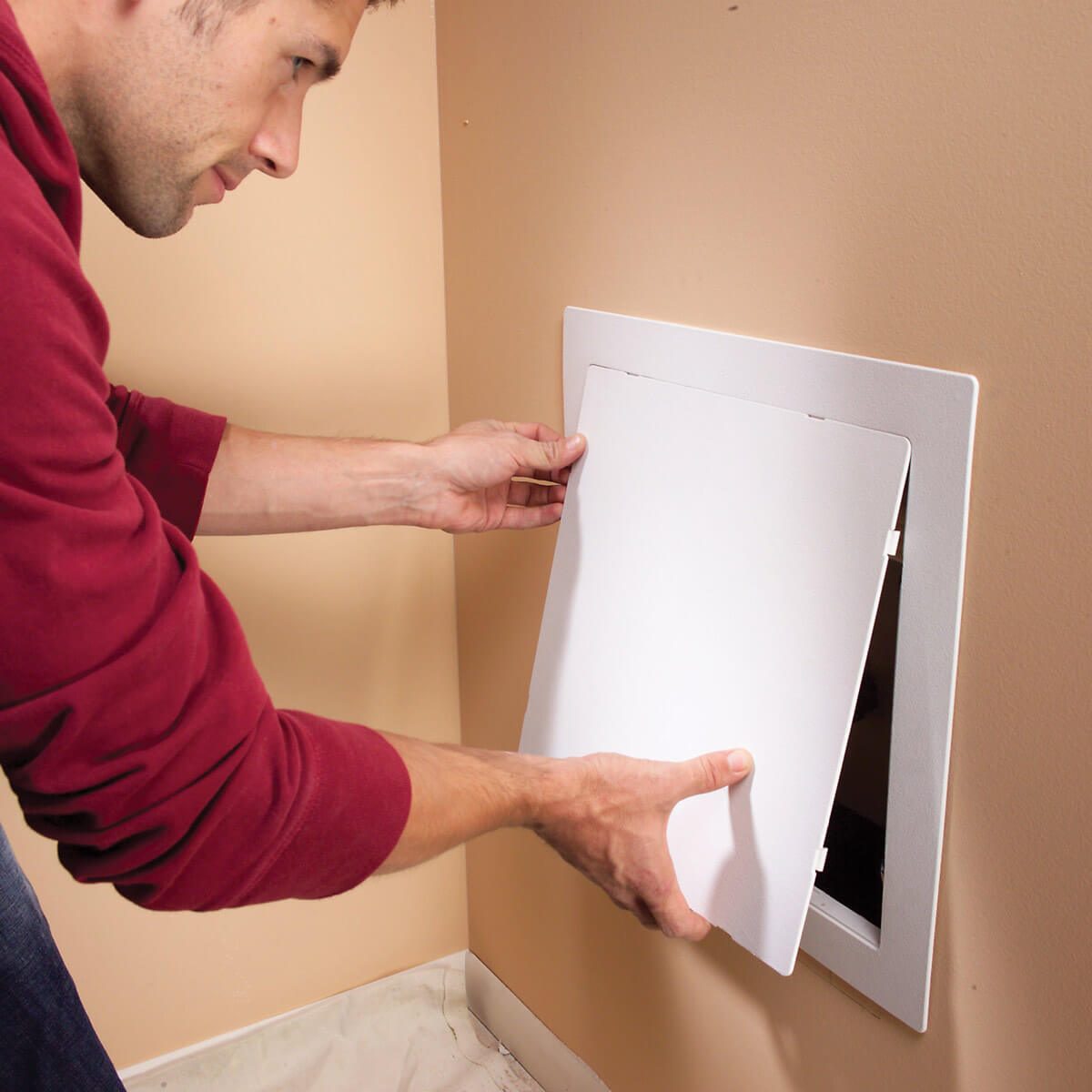When to Install a Commercial Plumbing Access Panel
One of the most prevalent and necessary components in every residential or commercial construction is plumbing systems. Since it is responsible for water management and disposal, it is crucial to conduct regular inspections and upkeep on each pipe and fixture. Even minor blockages can disrupt the business and cause a major inconvenience.
To ensure that the plumbing system works as it should, it must undergo routine inspections for any indications of damage or deterioration. Most valves and fixtures are hidden behind walls and floors, and the best way to conveniently reach through these components is through a plumbing access panel.
Types of Plumbing Access Doors
After establishing the convenience of installing an access panel to reach plumbing components during an inspection or repair, it is also essential to identify the different types of plumbing panels and their distinct features.
- PLASTIC ACCESS PANEL – Many plumbing panels are made of steel or plywood, but plastic panels are also ideal for people that are looking for a lightweight option. It has several size variations that are also easy to cut and install. Due to its efficiency and anti-fade and rust properties, plastic panels are more expensive than standard panels.
- 12 X 12 ACCESS PANEL – The best attributes of 12 x 12 panels are versatility and ease of installation. Not only are they ideal for plumbing, but they are also suitable for use on walls, ceilings, and security components. In addition, anyone with no prior experience in installing access doors can easily handle the installation process due to the 12 x 12 panel’s straightforward design and construction.
- DRYWALL ACCESS PANEL – Since drywall compounds are prevalent in the construction industry, choosing a drywall panel for wall and ceiling applications makes perfect sense. Most drywall panels are also easy to install and easily blend seamlessly into their installation surface.
- EXTERIOR ACCESS PANEL – Commercial plumbing systems aren’t exclusively used indoors. Several fixtures and valves are used outside, such as garden hoses, irrigation, and swimming pools. Exterior panels can withstand constant element exposure, such as steel insulated exterior access panels, which are also suitable for electrical and HVAC use.
- METAL ACCESS PANEL – If you need a more durable panel than plastic or wood, you can choose to purchase metal panels. In addition, they are resistant to fire and suitable for medium security applications.
- FLUSH ACCESS PANEL – Flush panels are exceptionally resistant to corrosion and assure the user that they will not fade. They also have a removable pivot hinge and offer superior protection to plumbing components.
- REMOVABLE ACCESS PANEL – A standard swing access door is not suitable in situations where an unmovable obstruction blocks the supposed entry point for a plumbing component. The most convenient way of addressing this dilemma is by installing removable panels ideal for walls, floors, and ceilings.
Ensuring that you install the right product for your plumbing access needs is crucial and necessary to guarantee that the panel will work. Identifying the material of the installation surface and its size are some of the significant factors you need to consider during the buying process.
How to Install Plumbing Access Panels
Every access door manufacturer designs and creates their products with factory precision and quality materials due to the role of these panels in construction projects, repairs, and inspections.
Despite their expected durability, any product will lose effectiveness when incorrectly installed. Most panels are easy to install, and here’s a quick step-by-step guide to better assist you during installation.
- STEP 1: Accurate measurements are essential in any installation project, especially in plumbing panels, since loose gaps can affect the product’s insulation and security features.
1.1: Start the process by measuring the length and width of the door without the frame. Add ¼ inch to the final measurements and use a straight edge to mark the area where to install the panel.
- STEP 2: Just because most access panels provide ease of installation, it doesn’t mean that it’s not necessary to wear protective gear. Most walls and ceilings have drywall compounds that are toxic when inhaled.
2.1: Wear a proper dust mask and place a drop cloth underneath the working area to catch falling debris. If any air ducts are nearby, cover them to prevent the dust from spreading throughout the building.
- STEP 3: Using a drywall saw, start lining the saw through the entire section along the line marks you drew earlier. Follow the lines accurately to ensure a snug fit.
- STEP 4: Remove the panel door from the frame with a flat head screwdriver if it comes with hinges. Measure the stand again to the cutout drywall and sand the edges if the allowance is smaller than the door.
- STEP 5: Before installing the frame, clean the installation surface by removing excess drywall dust around the edge as the dust can cause the adhesive not to work correctly.
- STEP 6: Run a bead-size silicone adhesive along the back of the frame and press it firmly into the hole. Reinforce the bond with clamps and leave the glue dry per the manufacturer’s instructions.
- STEP 7: As soon as the adhesive dries up, position the door at a 90-degree angle and insert the bottom and top pins into the frame until it latches into place.
Contractors and technicians prefer having appropriate access to building components. Hence, many consider access panels an essential part of every commercial facility making the installation process critical in maintaining the unit’s features and durability.
TAKEAWAY
The primary benefit of access panels is that they provide an appropriate entry point and secure critical components. While experts recommend a quarterly inspection for commercial plumbing systems, the ideal frequency will still depend on the age of the building. Despite this, breaking down walls and floors is inefficient on every inspection. Hence, an access door can effortlessly fulfill your plumbing access needs.


Comments are closed.